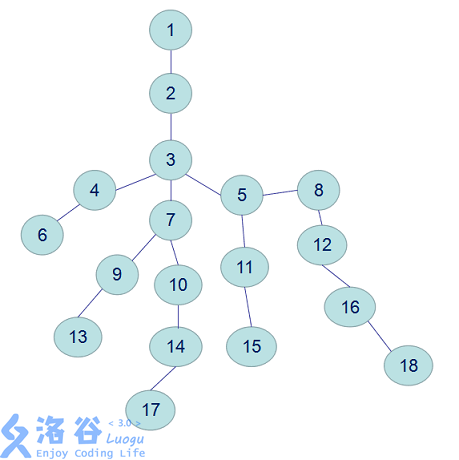1
2
3
4
5
6
7
8
9
10
11
12
13
14
15
16
17
18
19
20
21
22
23
24
25
26
27
28
29
30
31
32
33
34
35
36
37
38
39
40
41
42
43
44
45
46
47
48
49
50
51
52
53
54
55
56
57
58
59
60
61
62
63
64
65
66
67
68
69
70
71
72
73
74
75
76
77
78
79
80
81
82
83
84
85
86
87
88
89
90
91
92
93
94
95
96
97
98
99
100
101
102
103
104
105
106
107
108
109
110
111
112
113
114
115
116
117
118
119
| #include<iostream>
#include<cstdio>
#include<cmath>
#include<cstring>
#include<cstdlib>
#include<algorithm>
#include<ctime>
#include<iomanip>
#include<queue>
#include<stack>
#include<map>
#include<vector>
#define gh() getchar()
#define re register
#define db double
typedef long long ll;
using namespace std;
const int MAXN=5e5+1;
template<class T>
inline void read(T &x)
{
x=0;
char ch=gh(),t=0;
while(ch<'0'||ch>'9') t|=ch=='-',ch=gh();
while(ch>='0'&&ch<='9') x=(x<<3)+(x<<1)+(ch^48),ch=gh();
if(t) x=-x;
}
template<class T,class ...T1>
inline void read(T &x,T1 &...x1)
{
read(x),read(x1...);
}
template<class T>
inline bool checkMax(T &x,T &y)
{
return x<y?x=y,1:0;
}
template<class T>
inline bool checkMin(T &x,T &y)
{
return x>y?x=y,1:0;
}
int N,M,Root;
struct Graph
{
int next,to;
Graph(int n=0,int t=0):next(n),to(t){}
}Edge[MAXN<<1];
int Head[MAXN],Total;
inline void addEdge(int u,int v)
{
Edge[++Total]=Graph(Head[u],v);Head[u]=Total;
Edge[++Total]=Graph(Head[v],u);Head[v]=Total;
}
int Size[MAXN],Dep[MAXN],Top[MAXN],Fa[MAXN],Son[MAXN];
void dfsTree(int x,int last,int dep)
{
Fa[x]=last,Size[x]=1,Dep[x]=dep;
for(int e=Head[x],v;e;e=Edge[e].next)
{
if((v=Edge[e].to)==last) continue;
dfsTree(v,x,dep+1);
Size[x]+=Size[v];
if(!Son[x]||Size[Son[x]]<Size[v]) Son[x]=v;
}
}
void dfsDfn(int x,int topf)
{
Top[x]=topf;
if(!Son[x]) return ;
dfsDfn(Son[x],topf);
for(int e=Head[x],v;e;e=Edge[e].next)
{
v=Edge[e].to;
if(v==Fa[x]||v==Son[x]) continue;
dfsDfn(v,v);
}
}
inline int lca(int x,int y)
{
while(Top[x]!=Top[y])
{
if(Dep[Top[x]]<Dep[Top[y]]) swap(x,y);
x=Fa[Top[x]];
}
if(Dep[x]>Dep[y]) swap(x,y);
return x;
}
int main()
{
read(N,M,Root);
for(int i=2,u,v;i<=N;++i)
{
read(u,v);
addEdge(u,v);
}
dfsTree(Root,0,1);
dfsDfn(Root,Root);
for(int i=1,x,y;i<=M;++i)
{
read(x,y);
printf("%d\n",lca(x,y));
}
return 0;
}
|
